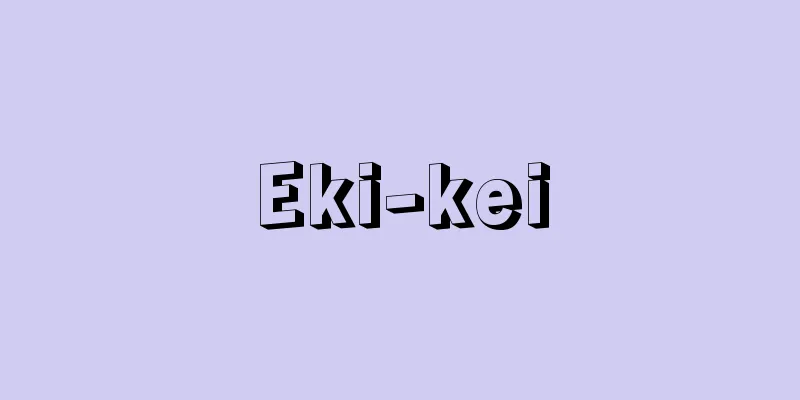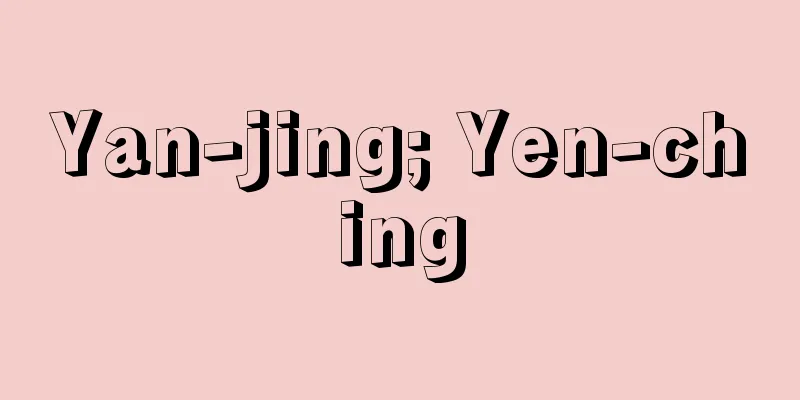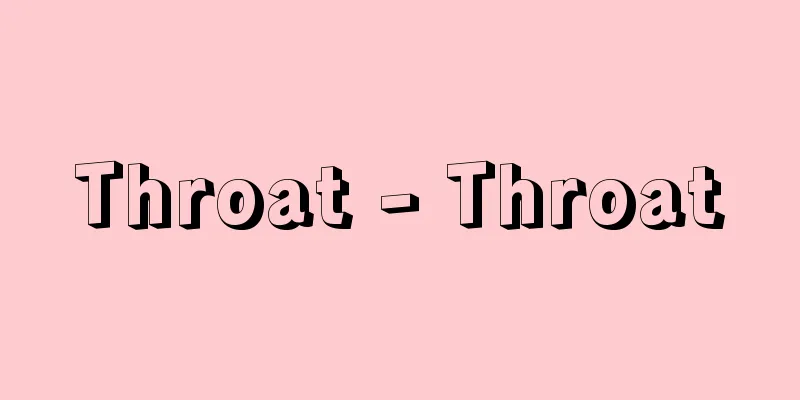Movement of hands - Unshin

|
A type of sewing technique that is the basis of hand sewing. It is a term that began to be used in Japanese dressmaking education from the beginning of the Meiji period. It is also called gusini or nami-ni. Two or more pieces of fabric are joined together and sewn together on both the front and back with a stitch of 3-4 mm for cotton and 2-3 mm for silk. Another technique used by Japanese dressmakers is the method of moving the needle while letting it move between the folded pieces of fabric, which is called unshin. Skill in unshining affects the appearance of the kimono and the time it takes to make it, so it is important to practice thoroughly. The correct posture for stitching is to stand up straight, tighten your lower abdomen, relax your shoulders, and hold the fabric with both hands at elbow height. [Kazuko Okano] How to hold the fabric and needlePut a thimble between the joints of the middle finger of your right hand, stick the needle into the fabric with two or three stitches, place the hole where the thread went through on the thimble, and hold the fabric with your middle, ring, and little fingers. Hold the fabric with your left hand about 20 cm away from the tip of the needle, using four fingers including the index finger, and hold the fabric so that your thumb is at a right angle to the line of stitching. The distance between the stitch and the fabric should be about 30 cm. When using a long needle, put a thimble with a plate on it, place the needle on the plate of the palm, and sew with a grip needle. This has the advantages of being easier as you don't have to grip the middle finger tightly, and being able to sew more at once, but a thicker needle is used to prevent it from breaking, which results in larger stitches. [Kazuko Okano] How to move the needleUse the thumb of your right hand to push the needle to the far side of the fabric, while at the same time removing your index finger from the fabric and pulling the fabric in your left hand towards you. Next, use the index finger of your right hand to push the tip of the needle towards the front of the fabric, while at the same time removing your thumb from the fabric and pushing the fabric in your left hand away from you, creating a pleat with each stitch. Repeat this alternating pattern until you have sewn to the full length of the needle. [Kazuko Okano] How to threadWhen you reach the left hand part, use the pads of your right hand to pull the thread tightly and then continue sewing. Finally, use the left hand to pull the thread all over, but if the pulling is not done properly, the finished product will be messy and the fabric will be easily damaged. It is important that the stitches are straight, there are no drifting needles, and there are no different sizes of stitches or different needles on the front and back. In addition to the above, when sewing thick fabrics, you can pull the needle out after each stitch to prevent the stitches from slipping. Furthermore, when sewing very thick fabrics or when sewing many overlapping layers of fabric, you can also use the interleaved stitch method, where you insert the needle from the front to the back and pull it out, then insert the needle from the back to the front and pull it out. [Kazuko Okano] ©Shogakukan "> Stitches and stitches Source: Shogakukan Encyclopedia Nipponica About Encyclopedia Nipponica Information | Legend |
|
手縫いの基本になる縫い方の一種。明治の初めからの和裁教育で使われ始めたことばである。ぐし縫い、なみ縫いともいう。2枚または2枚以上の布をあわせて、表裏とも木綿は3~4ミリメートル、絹布は2~3ミリメートルの針目で縫い合わせる。ほかに和裁技術士の間で行われている絎(く)け方で、折り合わせた布の間を泳がせるようにして、針を進める方法も運針という。運針の上手、下手は、着物の仕立て栄えと、仕立てに要する時間に影響するので、十分に練習する必要がある。 運針の正しい姿勢は、背を伸ばし、下腹に力を入れ、肩の力は抜いて、両手を肘(ひじ)の高さにして布を持つ。 [岡野和子] 布と針の持ち方右手中指の関節と関節の間に指貫(ゆびぬき)をはめ、針を布に2、3針刺して、糸を通した針穴の所を指貫にあて、中指、薬指、小指の3本で布を握り持つ。左手は針先より20センチメートルぐらい離して、人差し指以下4本で布を握り、親指は縫う線に対して直角になるように布を持つ。目と布との距離は30センチメートルぐらいとする。長針のときは、皿付き指貫をはめ、針を手のひらの皿にあてて、つかみ針で縫う。中指を固く握らないので楽であること、一度に多く縫えることなどの利点があるが、折れないように太めの針を用いるため、針目が大きくなる。 [岡野和子] 針の運び方右手の親指で針を布の向こう側に押し、同時に人差し指は布から離し、左手の布を手前に引く。次に右手の人差し指で布の手前側へ針先を押し、同時に親指を布から離し、左手の布を向こうに押すと、その一針ごとにひだができる。これを交互に繰り返し、針の長さいっぱいになるまで縫う。 [岡野和子] 糸のこき方左手のところまで縫い進んだら、右手の指先の腹でよく糸をしごき、また先に縫い進める。最後に左指先で全体の糸こきをするが、糸こきが不十分だと、仕上りが汚く、布も痛みやすい。針目はまっすぐで、流れ針のないこと、針目の大小、表裏の不同針がないことがたいせつである。 以上のほか、厚地縫いの場合は、針目が流れないように一針ごとに針を抜く一針抜きをする。さらにごく厚地のとき、または多くの布を重ね縫いするときは、手前から向こうに針を刺して抜き、次に向こうから手前に針を刺して抜く、刺し針縫いの方法もある。 [岡野和子] ©Shogakukan"> 運針と針目 出典 小学館 日本大百科全書(ニッポニカ)日本大百科全書(ニッポニカ)について 情報 | 凡例 |
<<: Unṣurī, Abū al-Qāsim Ḥasan
>>: "Cloud Record" - Unjo Monroku
Recommend
Basic Law of Jerusalem
...The fire at Al-Qasr Mosque, set by an Australi...
Henbun - Henbun
A storybook of illustrated chanting (wahon) that ...
Atlantic City
A resort town in the northeastern United States, N...
Hanayama [Village] - Hanayama
A village in Kurihara County, northwest of Miyagi ...
Hideko Kaburagi
…After the Association was dissolved, in 1914 he ...
《My Way》(English spelling) MyWay
...He founded Reprise Records in 1961, and was cl...
Nomé, FD (English spelling) NomeFD
...These include Micco Spadaro (real name Domenic...
Mitake
A mountain in the western part of Ome City, Tokyo....
Printing paper D - Printing paper D
…It is a common name for low-grade printing paper...
hygrophyte
…Plants that grow in normal, moderately moist soi...
Chichibu Onoda Co., Ltd.
The largest cement company in Japan in terms of sa...
Tide - Shiome
Also called tidal line. A band-like streak that ap...
Hishikawa Moronobu
An ukiyo-e artist from the early Edo period. He i...
Tongo - Tongo
〘Noun〙 A Buddhist term. To reach ultimate enlighte...
Bhāratavarṣa (English spelling)
The name "India" has been used since anc...









